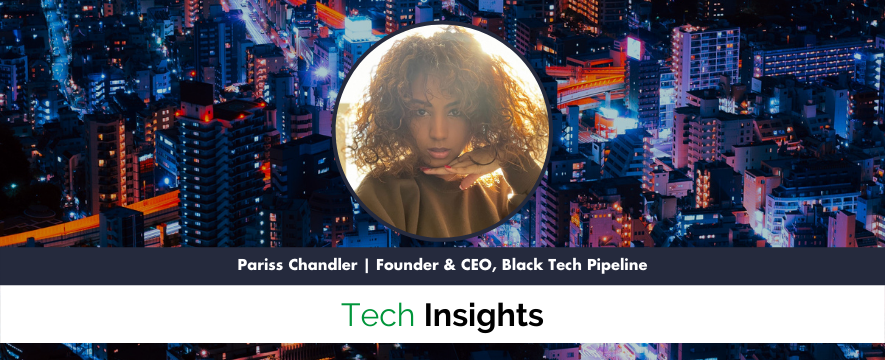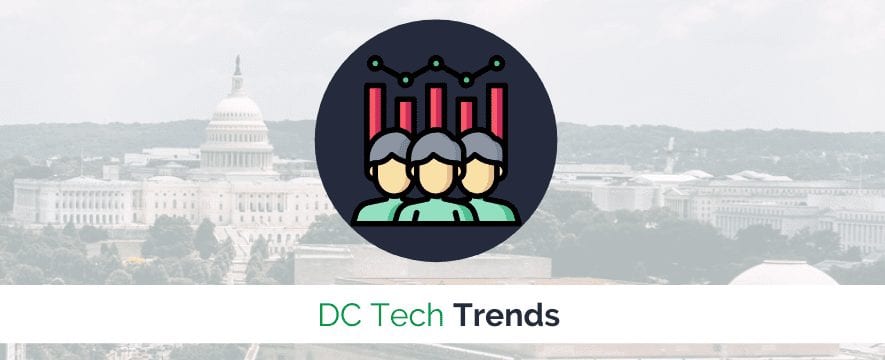“You want to have a representative workforce of what the world actually looks like.” – Pariss Chandler, Black Tech Pipeline
Let’s try an exercise: raise your hand if you have worked at a company with no one else that looked like you. Now, raise your other hand if you have ever felt forced to assimilate to a workplace culture with which you were unfamiliar. Finally, stand up if a company has ever hired you to check a box and gave you few opportunities for career growth.
If you’re currently standing with both arms above your head, you’re not alone.
We spoke with Pariss Chandler, founder and CEO of Black Tech Pipeline, about her startup’s mission to create more inclusive and healthy work environments for black engineers to flourish and expand their professional skills. As a black technologist with numerous experiences at predominantly white companies, Pariss detailed her journey into the technology space and provided paths for startup leaders to build work cultures of diversity, equity, and inclusion (DEI).
In this interview, we cover:
- How Pariss became interested in the tech industry
- Why Pariss founded Black Tech Pipeline
- How startups can build DEI into their culture
- How startup leaders can bring DEI into their companies from the beginning
The conversation below has been edited for length and content.
Describe your journey into the technology industry.
Before I got into tech, I was a wax specialist for three years while Obama was still in office. At the time, I noticed that he was pushing kids like my little brother to get into STEM and STEAM. I went to his principal and asked, “Why are kids learning to code? I feel like that’s something college students would be doing.” But he said, “No, we’re starting them young. If you don’t have a technological background, you’re going to get left behind.” That’s when I realized that I was losing clientele as a wax specialist to laser hair removal which is literally a machine.
So, I decided to learn more about coding and tech.
I joined a bootcamp called Resilient Coders and they taught me frontend web development. After graduating from there, I got my first job and my career kind of took off.
How did you come up with the idea for Black Tech Pipeline?
After leaving my bootcamp, I started working in these predominantly white settings in corporate America where I was the only black person in the room. I had so many different experiences where I was trying to adapt and assimilate to cultures that I wasn’t familiar with and having conversations around topics that I’ve never experienced. I also dealt with a lot of racism and uncomfortable work atmospheres. I felt like I couldn’t be myself.
I wanted to see if there were other black technologists like me out there, so I posted a tweet asking, “What does black Twitter in tech look like?” And that tweet ended up going viral. Black technologists from all around the world saw the tweet and posted pictures of themselves with captions of what they do in the industry. Overnight it formed this movement, community, and hashtag called Black Tech Twitter.
That tweet alone changed my life. A lot of employers started DM-ing me on Twitter and asking, “What can we source from your community? Can you send us candidates?” I knew that this would be a great opportunity to get more people who look like me into tech positions, so I began recruiting on the side for all of these different companies by sourcing candidates from this community that I formed.
A lot of people got jobs. But a lot of those same recruits came back and told me that they ended up leaving because their employers were being performative and only hired them to check a box. They weren’t actually learning, growing, or being given opportunities. Instead, they were being assigned to diversity, equity, and inclusion work.
I realized that if I wanted to get more black people and black representation in the industry, I had to do it right. So I founded Black Tech Pipeline and went full-time into it.
With our new model, I virtually stay on the job with anyone who gets hired out of Black Tech Pipeline for their first 90 days. I do check-ins with them to make sure that they’re having a good experience and I make sure that they’re being set up for success. I take the feedback that those hires give me and talk through that feedback with their employer.
If their employers are not living up to the expectations that they set, I hold them accountable and work with them to improve that hire’s experience and make them feel truly happy, safe, and healthy in that environment. That’s what Black Tech Pipeline is focused on now.
How can startups get involved with what Black Tech Pipeline is doing?
Startups can always reach out to us about our services, but they should want to do more than just hire.
If they’re trying to grow quickly and can’t dedicate a lot of time to check-ins and consultations with me, then we’re not the right fit for each other. I work with companies who truly want to learn how to build diversity, equity, and inclusion into the foundation of their company and want to retain new hires by making sure that they’re having positive experiences. DEI has to be a priority.
How can startup leaders make sure that they bring DEI into the startup from the very beginning?
If you’re thinking of forming a company, you should begin by thinking about what you want that company to look like. You want it to be diverse. I know a lot of people say diversity brings in more revenue because you’re building for more people with different experiences. That’s true, but I also think you should be hiring for diversity because that’s the right thing to do. You want to have a representative workforce of what the world actually looks like. At the foundation, you should be asking yourself:
- How do I create a product that can reach so-and-so audiences?
- How do I do this equitably?
- How do I make sure that my place of work is inclusive so that people will want to stay with us and build out this product to the best of their abilities?
When you start hiring, you should reach out to other communities outside of your networks. There are so many groups and communities you can search for on Google, Twitter, and LinkedIn where you can build relationships. If you hire this way, you can build a diverse workforce from the beginning and not when you’ve already established a culture at your company. If you wait to think about diversity, you’re not going to create a comfortable environment for your hires who now feel forced to assimilate to an unfamiliar workplace culture. You need to think about it at the very beginning.





